Writing in The Hill, Michael O’Hanlon argues “given likely conditions there in 2020 and beyond, Democratic presidential candidate should develop a plan for a modest but enduring presence of some 5,000 American troops, about a third of the current number, and phasing down to that by 2021 or 2022.”
In the aftermath of the mistaken decision of President Trump to pull most of the 1,000 remaining American troops out of Syria, where they had disproportionate influence in helping to protect the Kurds, ward off Iran, and empower Kurdish forces to detain more than 10,000 Islamic State fighters, what might be the next shoe to drop? Are there other unstable places around the world where the American commander in chief, who wields outsize authority in making such decisions despite a Constitution giving Congress the exclusive right to declare war and maintain armies and navies, might suddenly take more bold and precipitous action?
This fear, always present today, has just become much more acute. The abrupt decision was widely and rightly condemned by lawmakers on both sides of the aisle. But with an electorate tired of forever wars, Democratic presidential candidates catering to that electorate and a new Pentagon strategy focusing on great power rivalry with Russia or China, Trump is not alone in the sentiments that led to the policy change. If they really wish to portray Trump as reckless and disloyal to valued allies, Democrats who hope to replace him as president need to declare what they would do themselves. The Syria pullout will soon be history, so what comes next?
Most likely, attention will turn to Afghanistan. Given likely conditions there in 2020 and beyond, Democratic presidential candidate should develop a plan for a modest but enduring presence of some 5,000 American troops, about a third of the current number, and phasing down to that by 2021 or 2022. The number could decline further if a peace deal were struck, or if the Afghan military developed greater strength and battlefield power. Otherwise, a Democratic president should avoid the yearly drama of the latter Obama and Trump years, and simply commit to such a presence along with a streamlined mission focused mainly on counterterrorism.
This idea for a smaller but enduring American military presence within Afghanistan will go against much of the preferred sentiment within the progressive base. But Democrats do not have the luxury of sweepingly opposing long term military missions while castigating Trump for ending them recklessly in the way he just did. Trump has given conflicting signals about his intentions in Afghanistan. He clearly wants out, like President Obama before him. It was his tweet last year announcing a quick pullout of American forces from Syria and a halving of forces in Afghanistan that led to the resignation of Defense Secretary James Mattis. Trump later suspended both timelines, but his recent decision on Syria will inevitably put the Afghanistan question back on the table as well.
American troop numbers there are being gradually reduced from nearly 15,000 to less than 10,000 even in the absence of any peace deal with the Taliban. However, absent a comprehensive peace deal with the Taliban by next fall that also involves the Afghan government, the odds of which are strikingly low, Trump will face a major dilemma. He will have to choose between his promise to end forever wars and leave Afghanistan or his promise to defeat global terrorism and protect the United States. Indeed, Al Qaeda still has a presence in Afghanistan that extends beyond the border, while the Islamic State has a growing presence in Afghanistan.
Neither has provided the capability or bastion that extremists would need to strike the United States. But why run the experiment of seeing if they could do so after we leave? It makes sense for Western countries to keep numerous counterterrorism strongholds throughout the broader region where the jihadist scourge has been most serious. An enduring presence in Afghanistan does so, complementing other midsize capabilities in countries closer to the Middle East such as Iraq, Qatar, and Kuwait.
To be sure, some will say that terrorism can be checked even without an American military presence on the ground, even if our departure leads to all out civil war or victory by the Taliban. Perhaps any future Al Qaeda or Islamic State presence on Afghan soil can be handled with long range strikes or occasional commando raids that emanate from ships in the Indian Ocean. Or perhaps we can be confident such groups have no substantial future interest with basing themselves in Afghanistan.
That latter argument ignores history, however, as well as the geographic suppleness of global extremist movements in general. Few saw the Islamic State caliphate coming in Iraq and Syria before 2014 but then, all of a sudden, it was there. The former argument shows a poor appreciation of how counterterrorism intelligence is developed, usually by cooperation with partners on the ground, along with an unrealistic appreciation of the geographic remoteness or ruggedness across the Hindu Kush terrain.
It is true that the Afghanistan war is not being won. Nor is it being lost. The Afghan government still controls the territory where about 60 percent of the population lives, including all the cities. The Taliban strongholds amount to 10 percent to 15 percent of the population, according to the latest official American government estimates. In addition, no major attack on the United States has again come from Afghanistan since 9/11. The casualties to Afghans are way too high, but that is a strange reason to concede a war to the enemy responsible for most of those casualties.
Phasing down to 5,000 American troops, then remaining for several years, would be the sound military cornerstone of an Afghanistan policy for the next president. That force, also roughly the number we now field in Iraq, is sustainable both militarily and politically. With that total, the United States could maintain two or three major airfields and hubs of operations for intelligence and special forces at Bagram near Kabul in the center, near Kandahar in the south, and perhaps near Khost or Jalalabad in the east.
It also can maintain a modest military advisory and training presence in Kabul to help the Afghan army and police carry out the bulk of the fighting against extremists. The annual cost of this would be perhaps $7 billion to $8 billion, not trivial but only 1 percent of the defense budget. Committing to such a presence for half a decade signals to the Taliban and Pakistan that the new president would not be expecting a “Hail Mary” peace deal as a viable exit strategy. Perhaps such a promise would even improve the seriousness with which one or both might then engage in peace talks.
We have had too much drama about Afghanistan since 2013, always wondering if we should pull out by the end of that year or the next. However well intentioned as a way to put pressure on our partners in Afghanistan to clean up their acts and step up their military efforts, it has not worked beyond emboldening both the Taliban and Pakistan, and consuming enormous policymaking bandwidth in Washington. Instead, we need a policy that recognizes Afghanistan for what it is, a significant but not a top strategic American interest, and builds a plan accordingly. That overall strategy should still seek peace, but the modest military element should be stable and not set to a calendar. Any Democratic presidential candidate espousing such an approach will demonstrate a seriousness and steadiness of purpose that Trump manifestly has not.
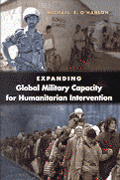
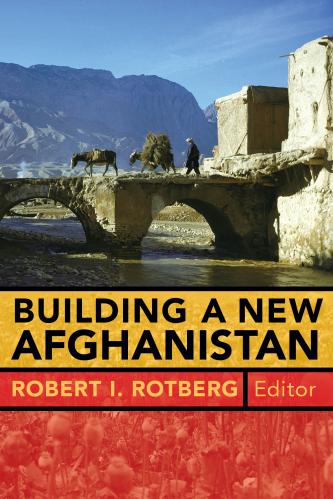

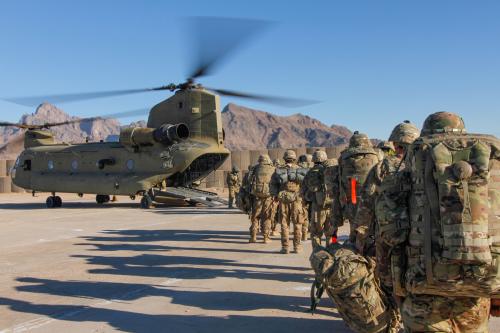
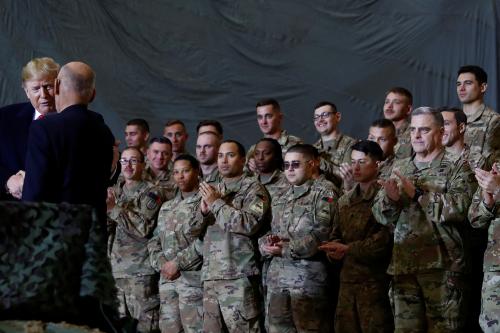
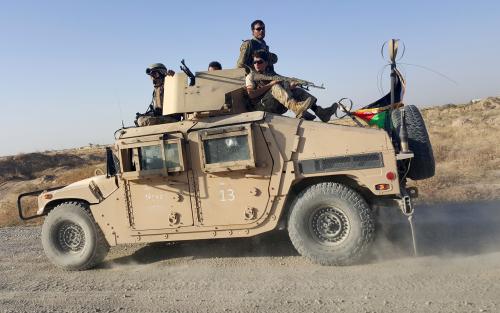


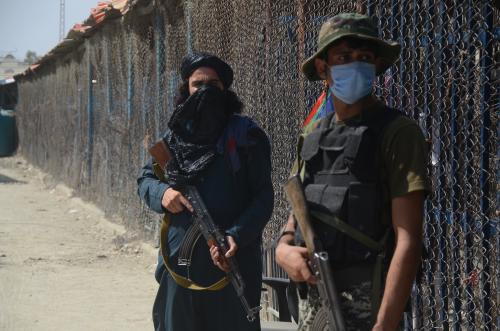
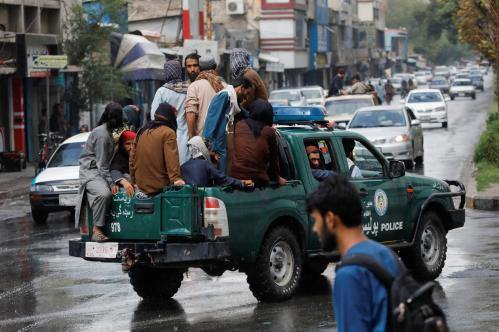
Commentary
Why Democratic candidates should propose ‘5,000 for 5’ in Afghanistan
October 28, 2019